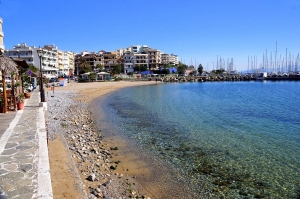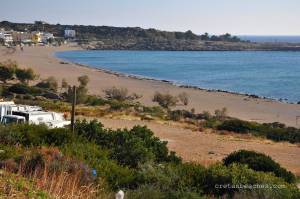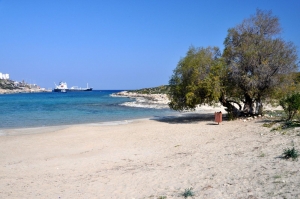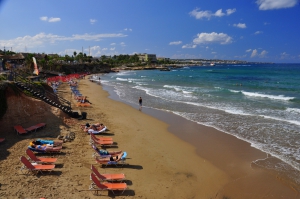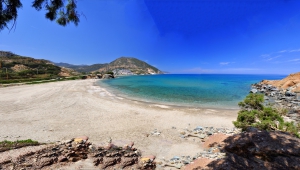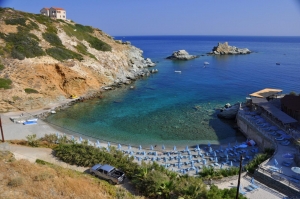Ammos Beach is located 500m south of the center of Agios Nikolaos. It is a long beach which starts near the city's marina, at Nearchos Street. It runs near the stadium of the town and extends to the south, to the Municipal Beach. The part near the marina is a beautiful beach with umbrellas, sunbeds, showers, water sports, restaurants, and hotels around it. It is located near the city center and its stores. The water is shallow, ideal for little kids and the sea is usually flat.
The beach of Pahia Ammos (i.e. Coarse Sand) is located on the west side of Paleochora, 79km south of Chania. Pahia Ammos has been awarded with a blue flag, which confirms that this is a safe and clean beach.
Agios Onoufrios is a small seaside village of Akrotiri, which is located 8km north of Chania and close to Kounoupidiana. The village is actually a suburb of Chania, since it is very close to the city. It is named after the small chapel next to the beach that is dedicated to St. Onoufrios and celebrated on June 12.
Hersonissos is a very busy, touristic town located 28km east of Heraklion. 2km east of the Hersonissos port, you'll find several nice coves, that constitute the complex of east Hersonisos beaches.
Fodele beach is located 26km northwest of Heraklion and just 3km north of the village Fodele, which is believed to be the birthplace of the painter Domenikos Theotokopoulos, mainly known as El Greco. The National Road connecting Heraklion and Chania passes beside the beach.
Adelianos Kampos (or Kambos) is located 6km east of Rethymnon, near the village of Adele, on a flat plain. The name means “Plain of Adele”. It is actually a seaside suburb of Rethymnon, as the small village has grown so much in the last century, that it is now a part of the city.
Madé (or Madés) is a small coastal village located near Ligaria, 20km northwest of Heraklion and 1.5km east of Ligaria beach. It is located near the northernmost edge of the Gulf of Heraklion, which called Cape Bourouni of Rogdia. To get this far from Heraklion, drive in the highway to Chania and take the exit of Ligaria. Just after 1.5km you will see a sign for Madé.
500m north of the legendary Mirabelo hotel you will find the tranquil beach of Havani, where a well organized municipal beach operates. In Havania there are options for accommodation and food. On the beach you will find a lifeguard and water sports. According to reports, during the years of Ottoman rule there was a small port and its remnants are still visible in the sea.











